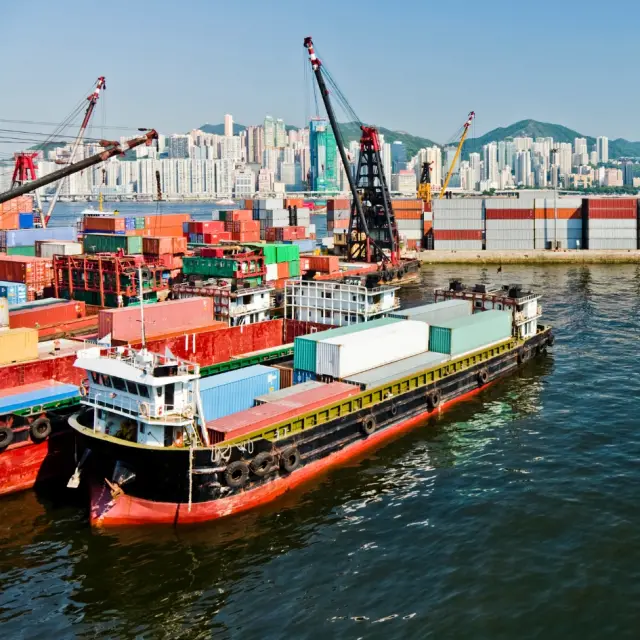Trade in Colombia is one of the main economic activities that drives the country's growth and development. From its early stages of local exchange to modern globalization, Colombian trade has evolved significantly. This article explores the most relevant aspects of trade in Colombia, including its history, its current importance in the economy, the most representative sectors, and the challenges it faces in a competitive and globalized environment.
History of Trade in Colombia.
Trade in Colombia has its roots in the bartering activities carried out by indigenous communities before the arrival of the Spanish. With colonization, new exchanges of goods arose, including the export of gold, tobacco and cocoa. During the 19th century, with independence, new markets opened and exports were diversified, marking a significant advance in trade relations with other countries.
In the 20th century, Colombia established itself as one of the main coffee exporters, which placed the country on the global trade map. The economic opening in the 1990s marked a before and after in Colombian trade, with the signing of free trade agreements (FTAs) and entry into international organizations such as the World Trade Organization (WTO).
Importance of Trade in the Colombian Economy.
Today, trade represents a key sector for the Colombian economy, contributing significantly to the Gross Domestic Product (GDP). According to data from the National Administrative Department of Statistics (DANE), commercial activities contribute approximately 18% of the GDP.
The importance of trade is also reflected in the generation of employment. According to the Ministry of Trade, Industry and Tourism, more than 5 million people work in trade-related activities, both in small businesses and in large companies.
Main Business Sectors.
Foreign Trade.
Colombia's foreign trade is characterized by the export of primary goods and manufactured products. The main export products include:
Agricultural products : coffee, bananas, flowers and sugar.
Minerals and energy : oil, coal and gold.
Manufacturing : textiles, clothing and chemical products.
Colombia's main trading partners include the United States, China, the European Union, and Latin American countries such as Mexico, Brazil, and Ecuador. The Free Trade Agreement with the United States, in force since 2012, has been a catalyst for increasing exports to this market.
Domestic Trade.
Domestically, retail and wholesale trade plays a crucial role in the distribution of goods and services. Major cities such as Bogotá, Medellín, Cali and Barranquilla concentrate the majority of commercial activities. In addition, the rise of shopping malls and e-commerce has transformed the way consumers access products.
The Impact of E-Commerce.
In recent years, e-commerce has experienced exponential growth in Colombia. According to the Colombian Chamber of Electronic Commerce (CCCE), the value of online transactions increased by more than 40% between 2020 and 2023. This increase is due, in part, to the adoption of digital technologies and the change in consumer habits due to the COVID-19 pandemic.
E-commerce platforms such as Mercado Libre, Linio and online stores of large chains have facilitated access to a wide range of products. In addition, digital banking and electronic payment services have improved the shopping experience for consumers.
Challenges of Trade in Colombia.
Despite its progress, trade in Colombia faces several challenges:
Poor infrastructure : Communication routes and logistics in some regions of the country limit the competitiveness of domestic and foreign trade.
International competition : Economic opening has exposed Colombian companies to greater competition, especially in sectors such as manufacturing and agricultural products.
Informality : A high percentage of commercial activities in Colombia take place in the informal sector, which affects tax collection and limits access to employment benefits.
Climate change : Climatic phenomena, such as droughts and heavy rains, negatively impact agricultural production, one of the pillars of trade.
Policies and Strategies to Boost Trade.
The Colombian government has implemented various policies to strengthen trade, such as:
Export promotion : Through entities such as ProColombia, we seek to position Colombian products in international markets.
Infrastructure investments : Projects such as the Ruta del Sol and port modernization have improved connectivity.
Support for SMEs : Training and financing programs have enabled small and medium-sized businesses to enter e-commerce and expand.
Future Perspectives.
The future of trade in Colombia is promising, especially with the integration of emerging technologies such as artificial intelligence and blockchain into the supply chain. In addition, sustainability is emerging as a key focus, with initiatives that seek to reduce the environmental impact of commercial activities.
Trade in Colombia is a reflection of the country's diversity and dynamism. Although it faces significant challenges, the opportunities for its development are broad. With a combination of effective public policies, technological innovation and active participation of different sectors, Colombian trade is well positioned to remain a key driver of the national economy.
Sources consulted:
